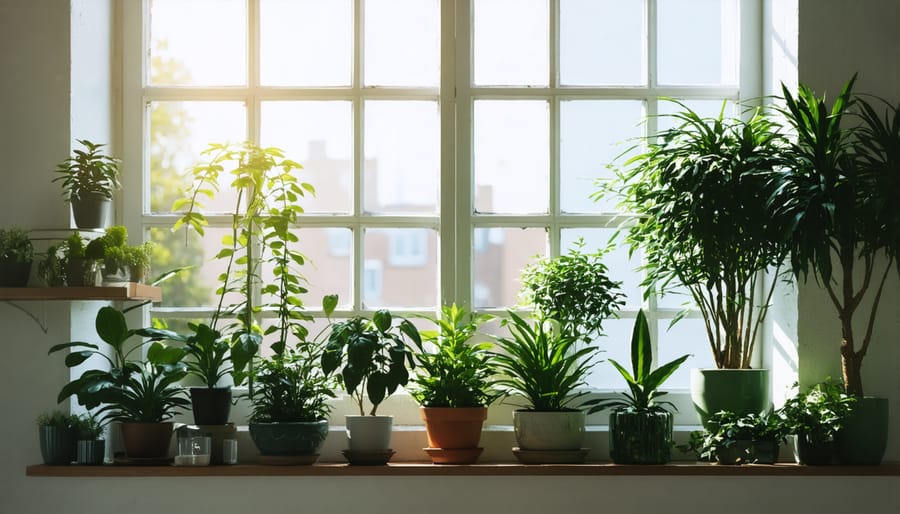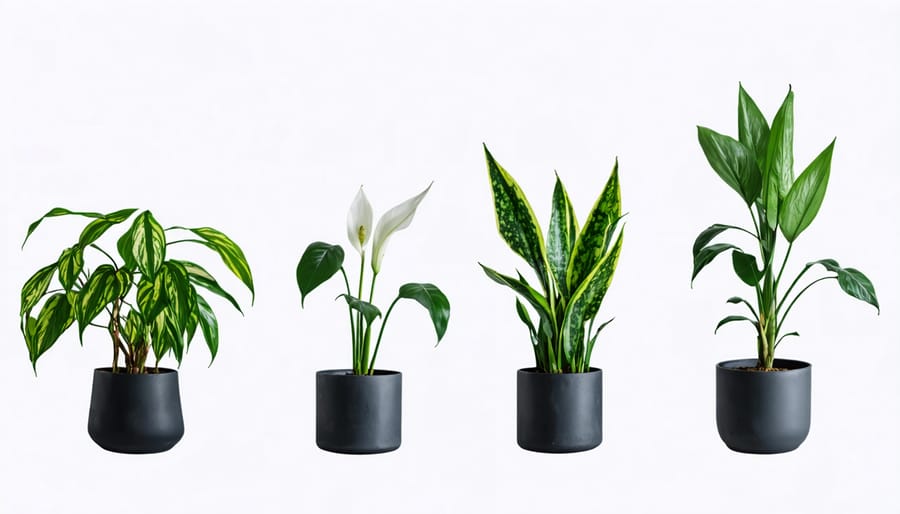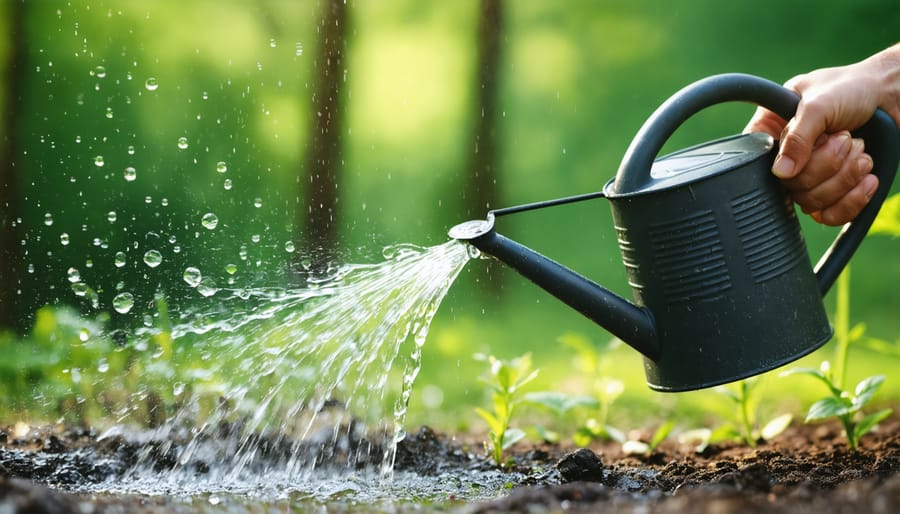Transform any sunny windowsill into a thriving indoor garden with just a few basic supplies and the right knowledge. Growing plants indoors isn’t just a hobby – it’s a rewarding way to bring nature’s beauty into your living space while producing fresh herbs, vegetables, or stunning ornamental plants year-round. Even if you’ve never grown anything before, starting an indoor garden is surprisingly straightforward and forgiving.
Begin with hardy, low-maintenance plants like pothos, snake plants, or fresh herbs such as basil and mint. These resilient varieties flourish in typical indoor conditions and can withstand common beginner mistakes. All you need to get started is quality potting soil, containers with drainage holes, basic growing lights for darker spaces, and a consistent watering routine.
The best part? Indoor gardening fits any lifestyle or space constraint. Whether you’re in a tiny apartment or a spacious home, there’s always room for a few well-chosen plants. Not only will you enjoy the satisfaction of growing your own greenery, but you’ll also benefit from improved air quality, reduced stress levels, and the joy of nurturing something from seed to bloom. Ready to start your indoor gardening journey? Let’s dig in.
Setting Up Your Indoor Garden Success Zone
Finding the Perfect Spot: Light and Temperature
Success with indoor gardening starts with understanding your home’s environment. To assess light conditions, observe how sunlight moves through your space throughout the day. South-facing windows typically provide the brightest light, perfect for sun-loving plants like succulents and herbs. East and west windows offer moderate light, ideal for many popular houseplants, while north windows work well for shade-tolerant varieties like peace lilies.
Don’t worry if your space seems too dark – you can always supplement natural light with grow lights. These come in various forms, from simple desk lamps to full-spectrum LED panels, making it possible to grow plants almost anywhere.
Temperature is equally important for your indoor garden’s success. Most houseplants thrive in temperatures between 65-75°F (18-24°C). Keep your plants away from drafty windows and heating vents, which can cause sudden temperature fluctuations. In winter, move sensitive plants away from cold windowsills at night.
Remember to consider humidity too. Many indoor plants originate from tropical regions and appreciate extra moisture in the air. You can increase humidity by grouping plants together, using a pebble tray filled with water, or running a small humidifier nearby. Just keep an eye on your plants – if leaf tips turn brown or leaves start drooping, they might be telling you something about their environment.

Container Basics: Your Plants’ New Home
Selecting the right container for your indoor plants is like choosing their first home – it needs to be comfortable and suitable for healthy growth. The good news is, you don’t need fancy or expensive pots to get started. The key is ensuring your container has adequate drainage holes at the bottom to prevent water from pooling and causing root rot.
For most indoor plants, plastic or ceramic pots work wonderfully. While plastic pots are lightweight and affordable, ceramic ones offer better stability and can add to your home’s décor. Whatever you choose, make sure it’s 1-2 inches larger than your plant’s root ball to allow room for growth.
Here’s a helpful tip: Any container can become a plant home as long as you can create drainage holes. Just remember to place a saucer underneath to catch excess water and protect your furniture. If you’re upcycling containers, clean them thoroughly with mild soap and water before use.
When it comes to size, bigger isn’t always better. Too large a pot can lead to overwatering issues, while too small can restrict root growth. Start with containers that are appropriate for your plant’s current size, and plan to repot as they grow.
Don’t forget to add a layer of gravel or small stones at the bottom of your containers to improve drainage and prevent soil from clogging the holes. This simple step can make a big difference in your plants’ health and happiness.

Foolproof Plants That Thrive Indoors
Low-Light Champions
Not everyone has the luxury of bright, sunny windows, but that doesn’t mean you can’t create a thriving indoor garden! Many plants have evolved to flourish in shaded environments, making them perfect for darker corners of your home.
The Snake Plant (Sansevieria) is a top performer in low-light conditions. This hardy plant not only tolerates dim spaces but also helps purify the air. Its striking vertical leaves add a modern touch to any room, and it’s nearly impossible to kill – perfect for beginners!
Another champion is the ZZ Plant (Zamioculcas zamiifolia), which seems to thrive on neglect. Its glossy, dark green leaves maintain their beauty even in minimal light, and it can go weeks between watering sessions. If you’re worried about keeping plants alive, this one’s for you.
Chinese Evergreen (Aglaonema) offers variety with its patterned leaves, bringing color to darker spaces. Available in silver, green, and pink varieties, it’s both beautiful and resilient. Keep the soil lightly moist, and it’ll reward you with steady growth.
Don’t overlook the classic Pothos – this vining plant adapts well to low light and grows enthusiastically with basic care. Its trailing stems can transform a boring bookshelf into a green cascade. The Philodendron Brasil is another excellent vine that maintains its variegation even in dimmer conditions.
Remember, “low light” doesn’t mean “no light” – position these plants near north-facing windows or a few feet back from brighter windows for optimal growth. With these hardy varieties, you can create a lush indoor garden regardless of your lighting situation.
Bright Window Winners
If you’re blessed with bright windows in your home, you’ve got the perfect spot for some sun-loving indoor plants. South and west-facing windows typically receive the most sunlight, making them ideal locations for plants that thrive in bright conditions.
Succulents and cacti are classic choices for sunny windowsills, as they’ve evolved to handle intense light. These low-maintenance beauties come in fascinating shapes and sizes, from compact echeverias to striking barrel cacti. Just remember: these plants prefer their soil on the dry side.
Snake plants and ZZ plants are also excellent options for bright spots, and they’re incredibly forgiving if you occasionally forget to water them. Their architectural shapes add drama to any room, and they can tolerate lower light conditions if needed.
For those interested in growing edibles, herbs like basil, rosemary, and oregano flourish in sunny windows. Not only will they add fresh flavors to your cooking, but they’ll also fill your space with delightful aromas.
African violets and crotons bring vibrant colors to bright spaces. African violets produce cheerful blooms year-round when given proper care, while crotons display stunning variegated leaves in shades of yellow, orange, and red.
To protect these sun-lovers from excessive heat, place them a few inches away from the window glass, especially during summer months. Most of these plants will thrive with 6-8 hours of bright, indirect sunlight daily. Watch for signs of too much sun, such as yellowing or scorched leaves, and adjust their position accordingly.
Simple Care Routines That Work
Watering Without Worry
One of the biggest concerns for new indoor gardeners is getting the watering schedule just right. The good news is that it’s easier than you might think! The key is to understand your plants’ needs and establish a simple routine.
Instead of sticking to a rigid schedule, check your plants’ soil moisture by pressing your finger about an inch deep into the soil. If it feels dry at that depth, it’s time to water. Most indoor plants prefer thorough watering until water drains from the bottom of the pot, followed by a period of slight drying out.
Common watering mistakes are easily avoided. Overwatering is actually more harmful than underwatering – it’s the leading cause of houseplant death. Signs of overwatering include yellowing leaves, mushy stems, and consistently wet soil. On the flip side, crispy brown leaves and wilting usually indicate underwatering.
Here’s a pro tip: Group plants with similar watering needs together. This makes it easier to maintain a consistent care routine. Also, consider using self-watering pots or moisture meters if you’re worried about getting it right.
Remember that seasonal changes affect watering needs. Plants typically need less water during winter months when growth slows down. Always water the soil directly and avoid getting leaves wet, as this can lead to fungal problems.

Feeding Your Green Friends
Just like us, plants need regular nourishment to thrive indoors. The good news is that feeding your indoor plants doesn’t have to be complicated! Most houseplants do well with a balanced, water-soluble fertilizer applied every 4-6 weeks during their growing season (spring and summer).
For beginners, I recommend starting with a general-purpose fertilizer with an NPK ratio of 10-10-10 or 5-5-5. Think of it as giving your plants a balanced meal – not too much, not too little. Always follow the package instructions, and remember that it’s better to under-fertilize than over-fertilize.
During fall and winter, most plants enter a rest period and need less feeding. You can reduce fertilizing to once every 8-12 weeks or stop altogether until spring returns. Watch your plants for signs they need nutrients: pale or yellowing leaves might indicate they’re hungry, while brown leaf tips could mean you’re feeding them too much.
Different plants have different appetites – flowering plants typically need more frequent feeding than succulents or cacti. If you’re unsure, start with half the recommended dose on the fertilizer package. As you get to know your plants better, you’ll learn to recognize when they need an extra boost of nutrients.
Remember to always fertilize moist soil – never feed a thirsty plant!
Keeping Plants Happy and Healthy
Regular maintenance is key to maintain healthy indoor plants, but don’t worry – it’s simpler than you might think! Start by dusting your plants’ leaves every couple of weeks using a soft, damp cloth. This helps them photosynthesize better and keeps them looking fresh and vibrant.
Pruning is another essential task that’s quite satisfying once you get the hang of it. Remove any yellow or brown leaves as soon as you spot them, and trim off leggy stems to encourage bushier growth. Always use clean, sharp scissors or pruning shears to avoid damaging the plant.
Keep an eye out for signs that your plant needs attention. Drooping leaves might mean it’s thirsty, while yellow leaves could indicate too much water. Remember to rotate your plants every few weeks so all sides get equal light exposure – this prevents them from becoming lopsided as they reach for the sun.
A quick daily check of your plants can help you catch potential problems early. Look for any unusual spots, wilting, or pest activity. Don’t forget to clean your pots and saucers occasionally to prevent mineral buildup and ensure proper drainage. With these simple maintenance habits, you’ll be surprised at how well your indoor garden thrives!
Congratulations on taking your first steps into the rewarding world of indoor gardening! Remember, every experienced gardener started exactly where you are now, and your indoor garden will continue to evolve and grow alongside your knowledge and confidence.
As you’ve discovered, indoor gardening isn’t just about keeping plants alive – it’s about creating a living, breathing space that brings nature into your home. The skills you’ve learned, from understanding light requirements to mastering watering techniques, have laid a strong foundation for your gardening journey.
Ready to expand your indoor garden? Consider these next steps:
Start experimenting with propagation by taking cuttings from your existing plants. It’s incredibly satisfying to grow new plants from ones you already have, and it’s a cost-effective way to expand your collection.
Try graduating to slightly more challenging plants once you’re comfortable with your starter varieties. Perhaps add a flowering plant to your collection, or experiment with herbs that require more specific care.
Create themed plant collections based on your interests. You might focus on air-purifying plants, develop a tropical corner, or cultivate a kitchen herb garden. Let your creativity guide you!
Join local gardening communities or online forums to share experiences and learn from others. The gardening community is incredibly supportive and always eager to help fellow plant enthusiasts.
Most importantly, don’t be discouraged by occasional setbacks – they’re valuable learning opportunities. Every yellowing leaf or drooping stem teaches you something new about plant care.
Remember, indoor gardening is a journey, not a destination. Take time to observe your plants, celebrate their growth, and enjoy the peaceful moments spent tending to them. Your indoor garden will become more than just a hobby – it will be a source of joy, pride, and constant discovery.
Keep growing, learning, and nurturing your green thumb. Your indoor garden adventure is just beginning!




